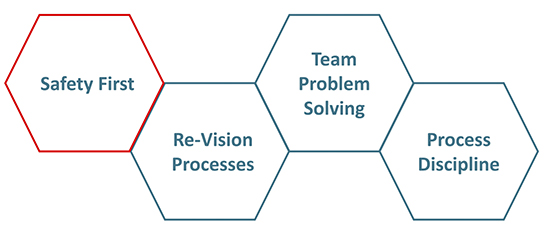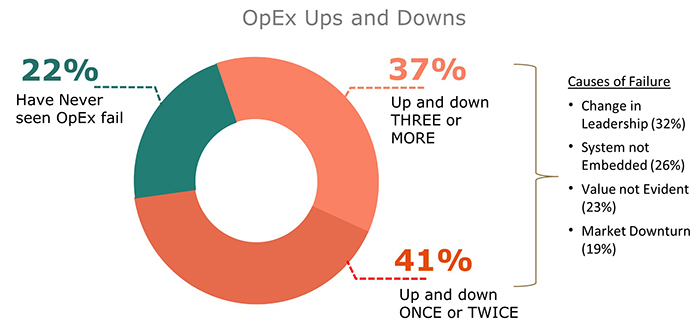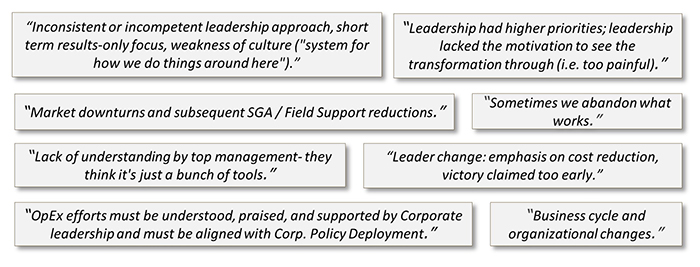Three Business Strategies for Dealing with a Pandemic
The pandemic isn’t going away any time soon. Besides the reality of economic upheaval on a global and personal level, the risks to health and life is real. Safety and economics are inexorably linked now. Everyone wants to do something, but exactly what is often unclear. The three business strategies for dealing with a pandemic described in this post are a good start.
 No one can afford to “wait this out”. Businesses that integrate a pandemic world view into their strategies are the most likely to survive and then thrive in a potentially less restrictive world. As we look to the future, things will be different because businesses are being driven by necessity to try new ways of working now. Major functions like workforce configuration, supply chains and how teams collaborate are changing and will remain changed.
No one can afford to “wait this out”. Businesses that integrate a pandemic world view into their strategies are the most likely to survive and then thrive in a potentially less restrictive world. As we look to the future, things will be different because businesses are being driven by necessity to try new ways of working now. Major functions like workforce configuration, supply chains and how teams collaborate are changing and will remain changed.
For many, chaos is what we are living with now. Well, maybe not chaos defined as: Total disorder and confusion. But some days have surely felt like it. Without being insensitive to the devastating human toll, there are some things things organizations should be doing to respond to the chaos of a global event to help secure and ensure their future:
- Re-vision processes
- Team-based problem solving
- Process discipline
None of these strategies are new. They’ve been around for a long time. However, the need to do them exceedingly well now is greater than ever. It’s not a matter of being more competitive in a market that everyone understands. At this moment, emerging market configurations are not well-understood and that is the opportunity. It’s about using the crisis as a catalyst for real change.
Urgency is driven by the fact that everyone is in the same situation. The playing field is leveled and the fastest actors win.
Re-vision Your Processes
Processes that once worked well enough no longer do. Some can be realigned with minor adjustments, while others need a complete overhaul. Have these categories even been identified where you are now? Those businesses that ignore the issue or try to force-fit old ways into the current situation without some proactive attention cannot compete.
To deconstruct processes and reconnect them in different and more flexible ways, develop a process strategy and evaluate the extended value streams. You might start with supply chains – the epicenter of this particular chaos. And, while this is a great place to focus energy, recognize that all of your business functions and processes are in a state of change now. Anything related to employee, customer and supplier safety is at the top of everyone’s list – or at least should be. Most everyone would rather work and do business where they feel safe.
Team-based Problem Solving
How we work together is different, but the need to work together is stronger than ever. Team-based problem solving is key to getting new processes defined and up and running. New ways of work designed in a vacuum and then foisted onto the organization don’t work. When there are a lot of unknowns, it’s tempting to do a sort of panic response. Some of it was necessary early on, but not anymore.
Solutions developed by those working inside the process are the only way to ensure that new processes are effective and implementable. You’ve got to do more than talk about these things. Take action! As solutions are developed, expand the team and do trials and pilots until you get things dialed in for full implementation.
A combination of remote collaboration and safe workshop environments (masks, social distance, etc.) now emerges as the new normal. Focus interviews, idea generation and data collection and analysis can be done remotely. Mapping and visualization can also be done remotely, but with the right precautions taken to ensure safety, tightly controlled and facilitated workshops are most productive.
As with all things, the pendulum swings with regard to remote versus in-person work. Some organizations will perceive new efficiencies based on remote work and turn hard in that direction. After a while though, the drawbacks will start to show and people begin to consider how to actually work safely in closer proximity (daily interviews, temperature checks, masks, washing and distancing). The only way to dial-in the best balance of risk and performance is to get users involved in the solutions.
Achieve Process Discipline
For any recovery, employee, customer and supplier safety must be in place. Face masks, distancing and other steps which vary by industry are here to stay. This means it’s ultra-important that people follow the rules. The most amazing thing about process discipline is that even when lives are at stake – and not just during a pandemic – people break the rules all the time. To get compliance you must:
- Define the rules: Simple and clear. Describe how to deal with exceptions too.
- Teach the rules: Everyone must understand them; what’s expected when and where.
- Reinforce requirements: Constantly.
From the list above, steps one and two (define and teach) are the easier ones. They require process analysis, documentation and training. The biggest problem for most is step three – constant reinforcement. This requires a change in behaviors up and down the organization – something that does not happen without significant attention.
Even when processes are re-visioned and designed well, all three of the steps for process discipline are routinely ignored. At a time when so much depends on making people feel safe and comfortable with work and commerce, it will pay dividends to those who focus on achieving good process discipline in their workplace.
Conclusion
Businesses and the processes that drive them are in a state of upheaval that will not go away soon enough for anyone to ignore this new reality. If you want to safely and effectively adapt to the challenges brought by the pandemic, now is the time to take the steps described here with deliberate intention.
———————
Kaufman Global is expert at helping organizations navigate operational and cultural change. If you want help bringing focus to any of the topics outlined here, give us a call. We’re ready to help and we will be creative in finding safe ways to collaborate with you and your teams.
To learn more about process discipline and procedural adherence, read our White Paper on topic: Procedural Adherence and Risk




 In practice it’s typically a combination of all of the above. The ratios shift over time as organizations learn and politics play out. Striking the right balance is essential for OpEx effectiveness. Articulating governance, communication and how people engage are all critically important.
In practice it’s typically a combination of all of the above. The ratios shift over time as organizations learn and politics play out. Striking the right balance is essential for OpEx effectiveness. Articulating governance, communication and how people engage are all critically important. Don’t over-complicate it. Too many rules lead to unwarranted bureaucracy and can kill beneficial creativity. If design and definition become the major focus, no one will ever get out of the blocks and actually start fixing things. Balancing standard requirements with creative and flexible problem-solving is one of the great challenges. Sorting that out creates a sense of ownership and develops the organization.
Don’t over-complicate it. Too many rules lead to unwarranted bureaucracy and can kill beneficial creativity. If design and definition become the major focus, no one will ever get out of the blocks and actually start fixing things. Balancing standard requirements with creative and flexible problem-solving is one of the great challenges. Sorting that out creates a sense of ownership and develops the organization. Do your meetings have strong agendas? | An agenda can be a powerful tool when leveraged appropriately. Providing a mechanism for order and control, a strong agenda includes clear objectives and deliverables, tells participants how to prepare and sets time limits. Agendas need to carefully thought out. For instance, if your agenda identifies an hour for the meeting, people will use the hour — regardless of whether it’s needed or not.
Do your meetings have strong agendas? | An agenda can be a powerful tool when leveraged appropriately. Providing a mechanism for order and control, a strong agenda includes clear objectives and deliverables, tells participants how to prepare and sets time limits. Agendas need to carefully thought out. For instance, if your agenda identifies an hour for the meeting, people will use the hour — regardless of whether it’s needed or not.